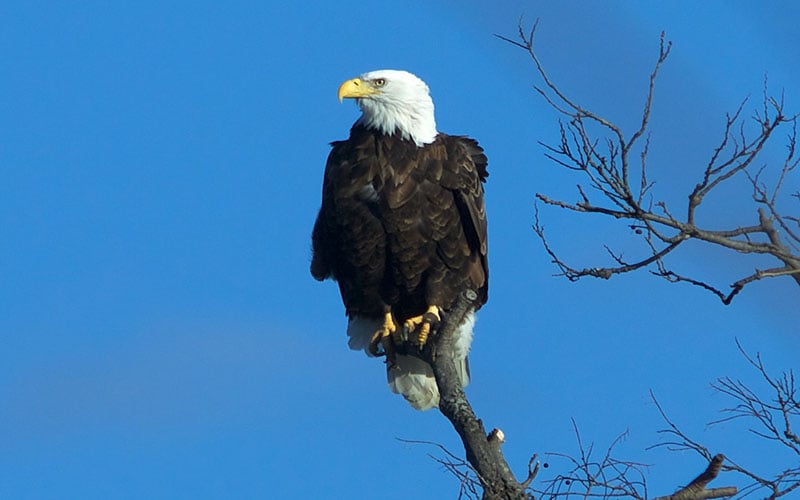
The bald eagle population in Arizona has increased steadily since 1967 when the species was first declared endangered. (Photo by Pat Bell via Creative Commons)
PHOENIX – Local conservation and environmental organizations plan to expand efforts to protect and grow Sonoran bald eagle populations after a federal court decision to deny the birds a spot on the endangered species list.
“We are for the most part on our own here in Arizona which is part of the reason we put so much effort into growing the populations,” said Kenneth Jacobson, raptor management coordinator for the Arizona Game and Fish Department. “We want to continue seeing them on our lands.”
Characteristics unique to the Sonoran eagles, such as nesting and breeding habits, are not “ecologically or biologically significant for the bald eagle” to be declared endangered, according to a ruling from a panel of the 9th Circuit Court of Appeals.
The ruling this week agreed with U.S. Fish and Wildlife Service that the desert eagles were no different than other bald eagles, disputing a claim by the Center for Biological Diversity that Sonoran eagles are unique to the desert.
When the eagles first made the endangered species list in 1967, there were less than a dozen Sonoran bald eagle breeding areas in Arizona, Jacobson said. But efforts by local organizations sparked an increase every decade in Arizona, even after desert eagles were removed from the list in 2007.
Today, there are more than 80 breeding areas. Jacobson, who also chairs the Southwest Bald Eagle Management Committee, a monitoring group, credits the gradual increase to the ongoing work of local organizations.
Chart by Kianna Gardner
“The listing of the eagles originally really helped put the focus on bald eagle management in Arizona and helped to create those needed partnerships,” Jacobson said.
Nearly 40 years ago, the Arizona Bald Eagle Birdwatch Program began closely monitoring the eagle’s breeding and nesting habits. Observers, in teams of two, were sent out to various locations.
More recently, Liberty Wildlife, a rehabilitation center has worked with Game and Fish to set up a 24-hour bald-eagle rescue service.
Caroline Suits, who coordinates volunteers for the center, said it is estimated handle more than 7,000 animals by the end of the year. So far, 90 bald eagles have been submitted for rehabilitation services.
Sheri Williamson, director and naturalist for the Southeastern Arizona Bird Observatory, said the desert eagles will require extra protection as Arizona continues to battle drought.
“We are in a dry state that is becoming more dry every year, so the eagles need all the help they can get,” Williamson said.
Sonoran eagles tend to nest and breed near streams and other bodies of water where fish are plentiful. The National Audubon Society and other environmental groups need to monitor those areas closely to make sure vegetation and water sources are available to the birds, said Tice Supplee, director of bird conservation for Audubon Arizona.
One out of three breeding sites are recreational areas, drawing people during the eagles’ vulnerable breeding and nesting seasons. Human interaction can cause eagles to abandon their nests, leaving behind eggs or fledglings.
Management teams will conduct seasonal closures to the public in order to increase successful breeding and nesting, Jacobson said.
“Even without the strong teeth of the endangered species act, the eagles are still occupying more habitat each year and the delisting hasn’t resulted in a reversal in their recovery,” Supplee said.
Supplee said limited government involvement in building and maintaining the bald eagle population means local organizations are key to the eagles’ continued survival.
“It’s disappointing that we can’t give them that extra protection that they deserve considering they are the symbol of our nation and a symbol of our great conservation efforts,” Williamson said. “We really need these organizations to continue stepping up.”